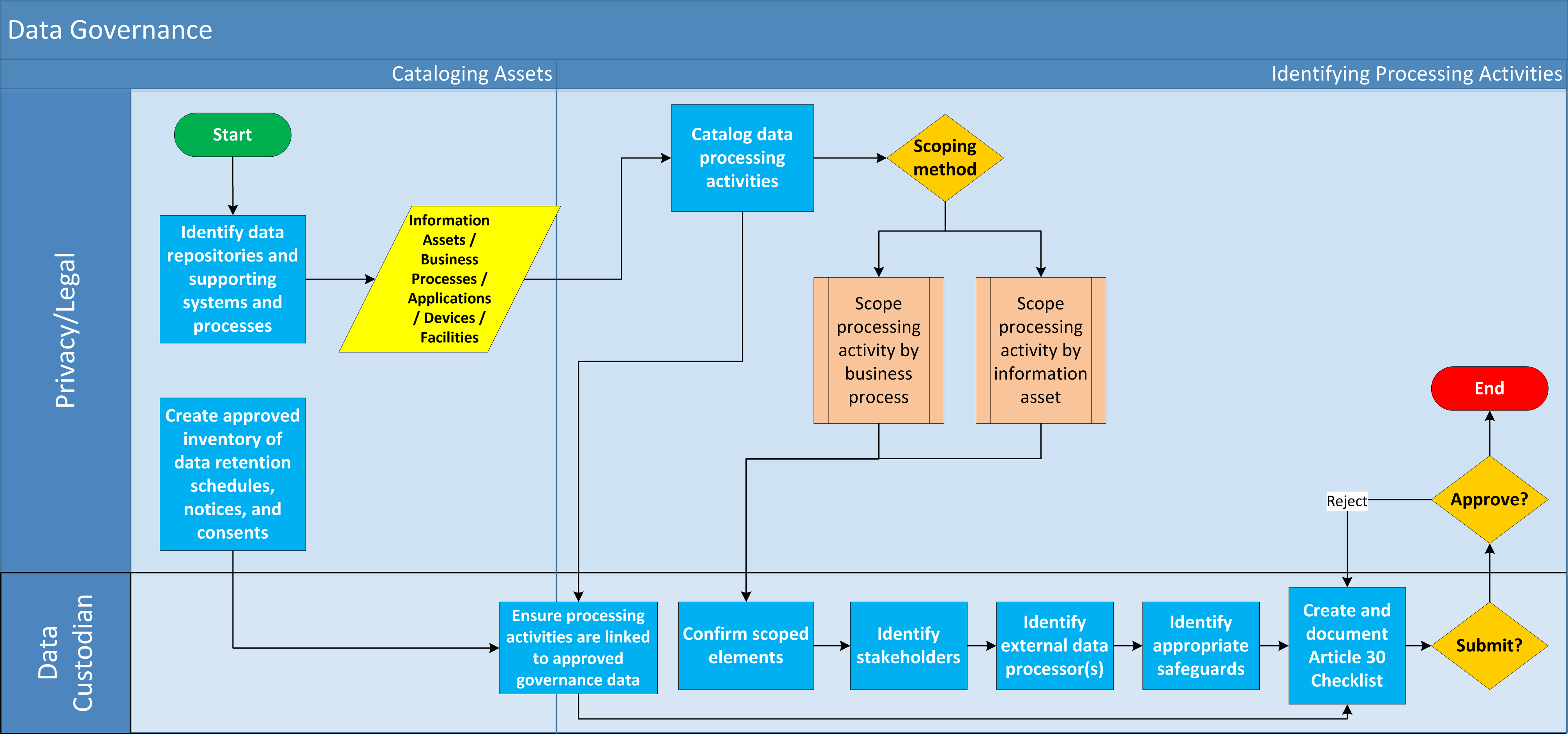Using Data Governance
The Data Governance use case supports the following processes.
On this page
Data Governance Process
The following diagram shows the major phases, key tasks, and users responsible for each task.

Cataloging Assets
The first step in managing a privacy program is to identify what personal or sensitive data your organization holds and create an inventory of your organization's retention schedules, privacy notices, and consent statements for that data. Identify each data repository and catalog it in the Information Assets application. You should also document the applications, facilities, and business processes that support your information assets. The retention schedules documented as part of this use case are applicable to multiple pieces of data, and can be related to all information assets to which they apply. The Notice and Consent Library allows you to document and track your organization's consent statements and privacy notices, as well as metadata about those statements.
Identifying Processing Activities
The Data Governance use case allows you to catalog all of your organization's processing activities— how your organization is using or processing customer data—and to assess what data is processed, why, how, and by whom. Examples of processing activities include receipt of customer data, processing customer data for a third party, and sending customer data to a third party.


